- Screen Colours:
- Normal
- Black & Yellow
´´In praise of The Ipswich Society from Anthony Cobbold
I write in my capacity as Keeper of The Cobbold Family History Trust. The excellence, as always, of the 60th anniversary bumper issue of the Newsletter bids me put pen to paper. Your Editor recalled that the tenets of the Society are the same today as they were 60 years ago: “…to treasure our history, protect and enhance what is valuable and monitor new developments and proposals.” Not surprisingly these are very close to the objectives of my own Trust though I must confess to being very cautious about monitoring proposals – particularly those of the romantic variety!
For unrelated reasons I live in Devon so have had many six or seven-hour journeys to what quickly became my beloved Suffolk. Throughout the 15 years since I settled the Trust it has benefited immeasurably from the Ipswich Society both at a personal and institutional level. Little wonder then that I have heard it said “If you only join one institution it has to be The Ipswich Society.” The Newsletter’s is one of the very few envelopes which gets torn open with enthusiasm.
Given that my task in treasuring the history of my family is not that different to the task of the Society, I acknowledge unreservedly my extraordinary good fortune in being born into such an interesting and participative family. Likewise, the Society has a richly endowed palette dating back some 800 years in the Borough of Ipswich. Accordingly, I claim a particular understanding of the Society’s work together with the benefit of the objective view of the relative outsider. In as far as I speak for my family, these thoughts bid us congratulate the Society on its diamond anniversary and express our gratitude for all that it has achieved over the years to the great benefit of the place and people of Ipswich.
This letter is our ‘Thursday 8.0pm front door clap’ to say thank you to the President, the Vice-Presidents, the Trustees and the Executive Committee of the Society for a job of considerable difficulty done quite extraordinarily well. Thank you.
[Many thanks to Anthony and to a large number of members and readers who got in touch and were so positive about the Ipswich Society and the recent Newsletters. -Ed.]
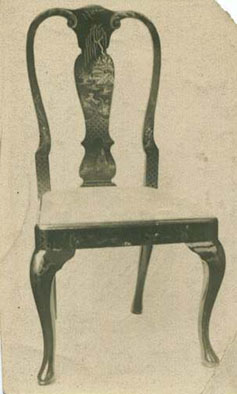 Tibbenhams and Saunders from Merv Russen
Tibbenhams and Saunders from Merv Russen
I was fascinated to read the article in the latest edition of the Newsletter [Issue 220] about Tibbenhams and Titchmarsh & Goodwin written by Heather Ling.
My grandfather joined Tibbenhams when they started in 1904 as a chairmaker. He brought his family from Norwich to join the company.
Here is a picture of a chair he made whilst employed there. It was a family rumour that it was part of a batch Tibbenhams made for the RMS Queen Mary launched in 1936.
My grandfather was foreman of the Chair Shop and in 1913 took on my uncle Bob (his son) as an apprentice. The family still has a copy of Bob’s apprenticeship indentures (see second picture). The language used in this document is quite quaint and of its time. Unfortunately my uncle, Robert Arthur Russen, was killed in France in May 1918 in World War I at the age of eighteen. He did not quite complete his apprenticeship.
I also have a menu (very English food) and programme, I think from the 30s, for a Chair Shop dinner held in the Picture House Café (now where Boots shop is). My grandfather chaired this and it appears everyone had to do a ‘turn’ during the evening.
My father was also a craftsman. He worked all his life as a stonemason for Saunders. They had one of their works in Hadleigh Road (where Sainsbury’s is now). One of my Dad’s first jobs after he completed his apprenticeship was to work on St Augustine’s Church and he was still alive when it had its diamond jubilee in 1988. As a result of this, we were given the honour of burying his ashes in the grounds of the church as he died in that same year. He also worked on Lloyds Avenue arch when it was built.
Thank you for an interesting Newsletter for us to enjoy during lockdown.
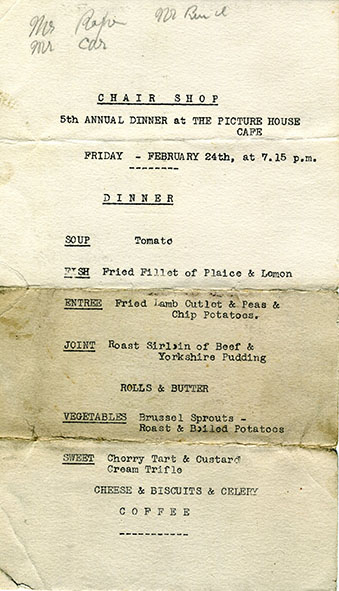
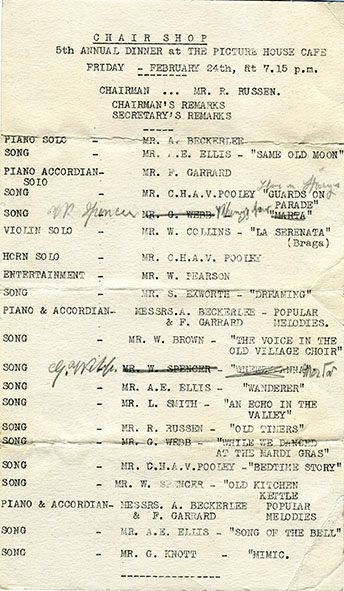
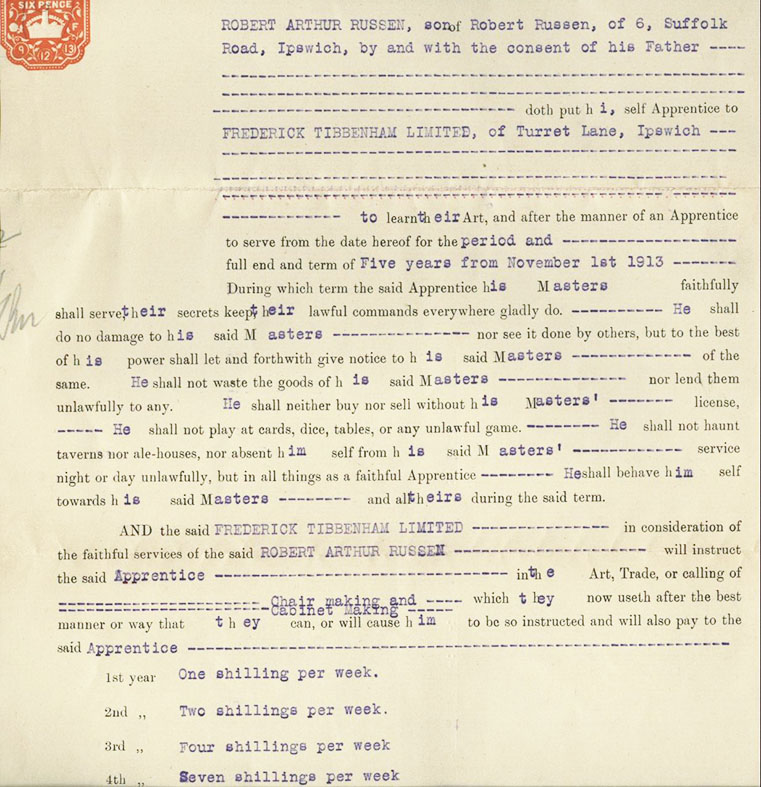
John Palmer photographs of the Buttermarket site from Rose Green
I have found, whilst de-cluttering, a number of photo albums about the building of the Buttermarket Shopping Centre and wondered if the Society would like them. They belonged to my dear friend John Palmer, who sadly passed away three years ago; he worked on the site from the beginning. It seems a shame to throw them away, if someone would like to see them.
See our back page for a photograph of John and two views of the site works. Also the related article on page 17.
Some notes from John Norman
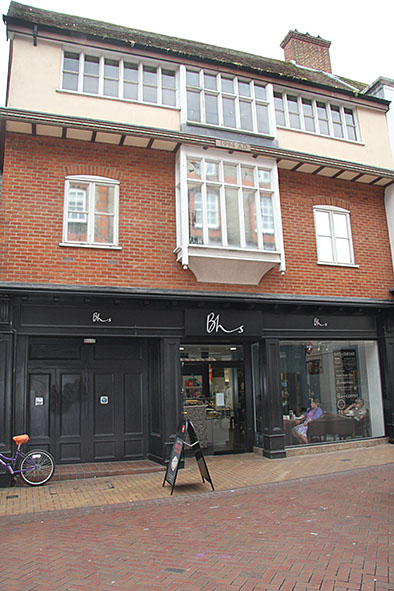
The double jettied frontage (BHS store), 42 Butter Market,1994. (JN)
The timber-framed building (shown here and in colour on the back page) survived as a part of the mall which eventually became British Home Stores. It was refronted as the double jettied building (part of BHS) opposite Robert Gatward Jewellers (formerly Johnson Cleaners), the red brick building with the mitred corner, visible to the left in the colour picture.
The vacant site in the foreground is the former Rex/ABC cinema which replaced the Wagon & Horses public house. The Ancient House is just off the picture to the left.
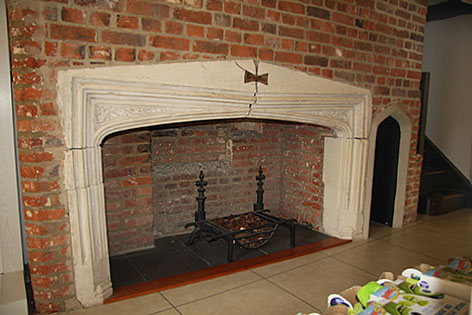
The fireplace on the ground floor. (JN)
The view of the Buttermarket site: the chalk cliff with the piling rig on higher ground means that the main part of the picture is the basement car park. The two truncated pyramid roofs just above the arm of the concrete pump are atop the Britannia Building Society offices on Queen Street (now the Co-op Bank with apartments above). I think the other brick building on the right is the Halifax in the Butter Market. So the photograph was taken from the top of St Stephen's Church tower, which Fairclough's were using as their site offices.